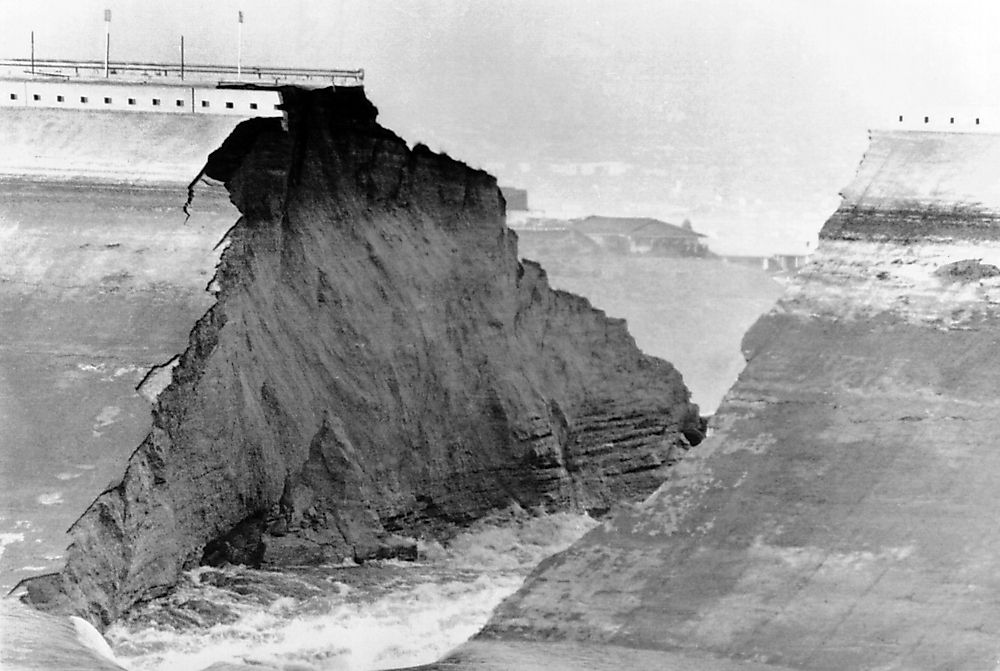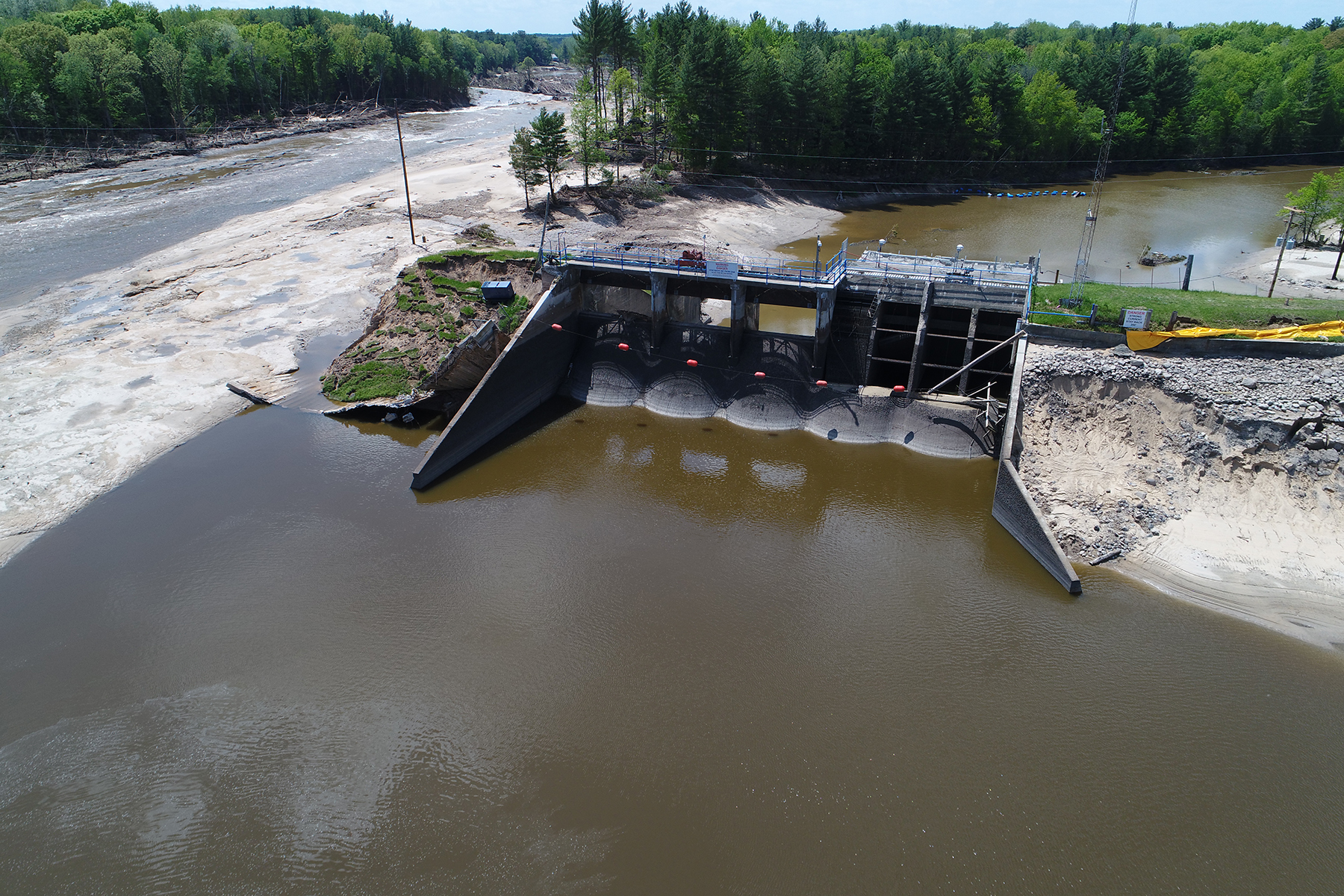Dam Failure Causes

The collapse of a dam, a structure built to contain water, is a catastrophic event that can have devastating consequences. Dam failures can be caused by a variety of factors, including structural deficiencies, operational errors, and natural disasters.
Dam failures, with their catastrophic potential, cast a shadow over the promise of water management. One such dam, the Rapidan Dam in Minnesota , serves as a stark reminder of the importance of vigilance and preparedness. Despite rigorous engineering efforts, dam failures remain a persistent threat, underscoring the delicate balance between human ingenuity and the forces of nature.
Structural Deficiencies
Structural deficiencies in a dam can make it vulnerable to failure. These deficiencies can include:
- Inadequate design: A dam that is not designed to withstand the forces it will be subjected to is more likely to fail.
- Poor construction: A dam that is not constructed properly is more likely to develop cracks or other weaknesses that can lead to failure.
- Aging: Dams that are not properly maintained can deteriorate over time, making them more susceptible to failure.
Operational Errors
Operational errors can also lead to dam failures. These errors can include:
- Overtopping: When a dam is overtopped, water flows over the top of the dam, which can erode the dam and cause it to fail.
- Rapid drawdown: When a dam is drained too quickly, it can cause the dam to collapse.
- Sabotage: Dams can also be sabotaged, which can lead to failure.
Natural Disasters
Natural disasters can also cause dam failures. These disasters can include:
- Earthquakes: Earthquakes can shake the ground beneath a dam, causing it to collapse.
- Floods: Floods can overtop a dam, causing it to fail.
- Landslides: Landslides can block the flow of water behind a dam, causing it to fail.
Notable Dam Failures
There have been a number of notable dam failures throughout history. Some of the most famous include:
- The Vajont Dam failure in Italy in 1963, which killed over 2,000 people.
- The Banqiao Dam failure in China in 1975, which killed over 170,000 people.
- The Teton Dam failure in the United States in 1976, which killed 11 people.
These are just a few examples of the many dam failures that have occurred throughout history. Dam failures can have a devastating impact on human life and property, and it is important to understand the causes of these failures in order to prevent them from happening in the future.
The failure of a dam, a structure designed to hold back water, can have catastrophic consequences. One such incident, the Rapidan Dam failure , serves as a chilling reminder of the importance of proper engineering and maintenance. The collapse of this dam in 1889 released a torrent of water that devastated the surrounding area, highlighting the devastating potential of dam failures.
Dam Failure Consequences
The consequences of dam failures can be catastrophic, ranging from the loss of human life and property damage to severe environmental impacts. The downstream effects of dam failures, such as flooding, erosion, and infrastructure damage, can extend far beyond the immediate vicinity of the dam itself.
Historical examples of dam failures illustrate the devastating consequences that can occur. The collapse of the Banqiao Dam in China in 1975, for instance, resulted in the deaths of over 26,000 people and the displacement of millions more. The failure of the St. Francis Dam in California in 1928 caused widespread flooding and killed over 400 people.
Loss of Life
Dam failures can result in the loss of life due to drowning, structural collapse, and other hazards. The sudden release of a large volume of water can create a wall of water that sweeps away everything in its path, including people, homes, and infrastructure.
Property Damage
Dam failures can cause extensive property damage, destroying homes, businesses, and infrastructure. The flooding caused by dam failures can also lead to erosion, landslides, and other hazards that can further damage property.
Environmental Impacts
Dam failures can have severe environmental impacts, including the destruction of aquatic ecosystems, the loss of habitat for wildlife, and the contamination of water supplies. The sudden release of a large volume of water can also alter the flow of rivers and streams, affecting the ecology of the surrounding area.
Downstream Effects, Dam failure
The downstream effects of dam failures can extend far beyond the immediate vicinity of the dam itself. Flooding caused by dam failures can travel downstream for miles, inundating communities and causing widespread damage. Erosion caused by dam failures can also lead to the loss of land and the destruction of infrastructure.
Dam Failure Prevention and Mitigation

To prevent dam failures, comprehensive measures are implemented throughout the dam’s lifecycle. These include adhering to stringent design standards, implementing robust monitoring systems, and establishing comprehensive emergency response plans.
Design Standards
- Dams are designed to withstand various loads and stresses, including water pressure, seismic activity, and extreme weather events.
- Design standards incorporate safety factors and redundancy to ensure the dam’s stability and integrity.
Monitoring Systems
Continuous monitoring systems track dam performance and identify potential issues. These systems include:
- Instrumentation to measure water levels, pore pressures, and structural movements.
- Remote sensing technologies to monitor dam deformation and surrounding conditions.
Emergency Response Plans
Emergency response plans Artikel actions to be taken in the event of a dam failure. These plans include:
- Evacuation procedures for downstream communities.
- Coordination with emergency responders and government agencies.
- Procedures for dam repair and recovery.
Risk Assessment and Hazard Mapping
Risk assessment and hazard mapping are essential for identifying and mitigating potential dam failure risks. These processes involve:
- Evaluating the likelihood and consequences of dam failure scenarios.
- Mapping potential inundation zones and identifying vulnerable areas.
- Implementing mitigation measures to reduce risks, such as flood warning systems or dam upgrades.
Best Practices for Dam Operation and Maintenance
Proper dam operation and maintenance minimize the likelihood of failures. Best practices include:
- Regular inspections and assessments to identify potential problems.
- Adherence to operating protocols to ensure safe water levels and dam stability.
- Proper maintenance of equipment and infrastructure to prevent malfunctions.
- Training and certification of dam operators to ensure competency.
Dam failures can unleash a torrent of destruction, sweeping away lives and livelihoods. One such tragedy occurred in Blue Earth, Minnesota , where a dam collapse in 1908 inundated the town, causing widespread devastation. The echoes of that disaster serve as a stark reminder of the catastrophic consequences that can result from dam failures.
Dam failures, often catastrophic events, can cause widespread devastation and loss of life. KEYC News provides up-to-date coverage of such incidents, offering in-depth analysis and expert insights. By staying informed through reputable sources like KEYC News, we can better understand the risks associated with dam failures and take appropriate precautions.
Dam failures, like the catastrophic Rapidan Dam break , serve as stark reminders of the potential risks associated with these towering structures. The sudden release of vast amounts of water can unleash a devastating torrent, sweeping away homes, infrastructure, and lives in its path.
Such events underscore the critical need for meticulous engineering, rigorous maintenance, and robust emergency preparedness measures to mitigate the catastrophic consequences of dam failures.